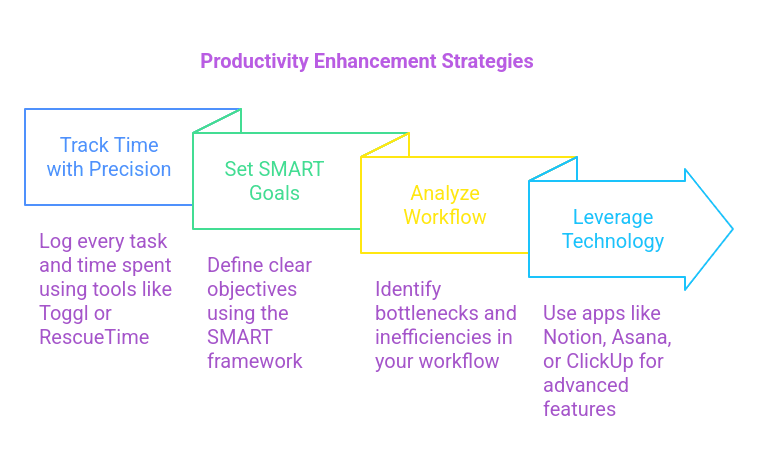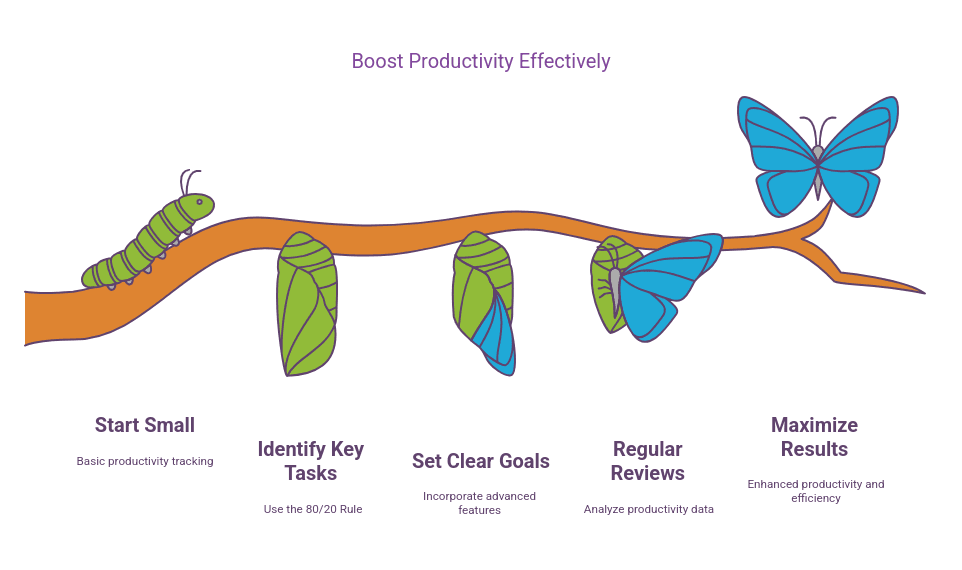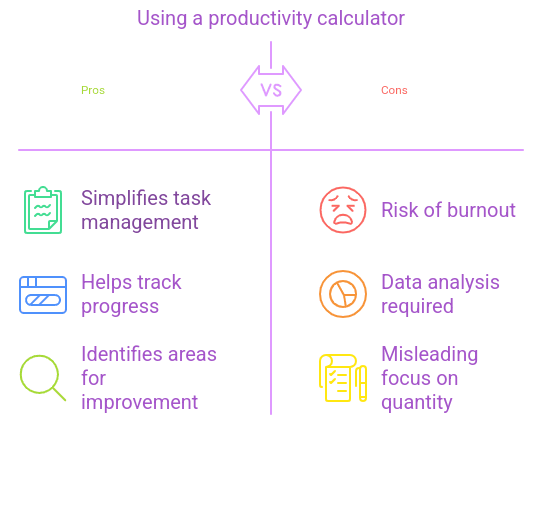Unlock Your Potential: How a Productivity Calculator Transforms Your Efficiency Journey
Introduction
In today’s fast-paced world, mastering efficiency is no longer a luxury—it’s a necessity. Whether you’re a busy professional, a student juggling multiple deadlines, or an entrepreneur striving to grow your business, understanding how to maximize your productivity is key to achieving your goals. But where do you start? The productivity calculator is a powerful tool that can assist you in measuring, analyzing, and optimizing your time and efforts.
We’ll explore how a productivity calculator can transform your workflow, why it’s essential for mastering efficiency, and provide actionable advice to get you started in this comprehensive guide. By the end of this article, you’ll have the tools and strategies to unlock your full potential, streamline your tasks, and achieve more in less time. Let’s dive in!
1. A brief explanation of the topic
What is a productivity calculator?
To measure how effectively you’re using your time and resources to achieve specific goals, use a productivity calculator. It helps you quantify your output, identify inefficiencies, and make data-driven decisions to improve your performance. It’s like a personal efficiency coach that helps you optimize your time.
Why is Mastering Efficiency Important?
Efficiency is the cornerstone of productivity. When you master efficiency, you can accomplish more in less time, reduce stress, and create space for creativity and innovation. A productivity calculator serves as a roadmap, guiding you toward smarter work habits and better time management.
How Does It Work?
A productivity calculator typically involves tracking your tasks, time spent, and outcomes. By analyzing this data, you can identify patterns, set realistic goals, and prioritize tasks that yield the highest results. Whether you’re using a digital app, a spreadsheet, or a simple pen-and-paper method, the principles remain the same: measure, analyze, and optimize.
2. Key points or strategies related to the productivity calculator
Strategy 1: Track Your Time with Precision
One of the most effective ways to use a productivity calculator is by tracking your time meticulously. This involves logging every task you complete and the time spent on it. Tools like Toggl or RescueTime can help you gather data on how you allocate your hours.
- Example: If you’re a writer, track how long it takes to draft an article, edit it, and publish it. Over time, you’ll notice patterns and identify areas where you can speed up or delegate.
Strategy 2: Set SMART Goals
A productivity calculator is only as effective as the goals you set. Use the SMART framework—Specific, Measurable, Achievable, Relevant, and Time-bound—to define clear objectives. This guarantees the alignment of your efforts with your priorities.
- Example: Instead of saying, “I want to be more productive,” set a goal like, “I will complete three client projects by the end of the week, dedicating two hours to each task daily.”
Strategy 3: Analyze and Optimize Your Workflow
Once you’ve collected data, analyze it to identify bottlenecks or inefficiencies. Are you spending too much time on low-priority tasks? Are there recurring distractions that disrupt your flow? Use this insight to make informed adjustments.
- Example: If you notice you’re spending 30% of your day on emails, consider batching them into specific time slots or using automation tools like Boomerang for Gmail to streamline the process.
Strategy 4: Leverage Technology
Modern productivity calculators often come in the form of apps or software that offer advanced features like automated tracking, goal setting, and performance analytics. Explore tools like Notion, Asana, or ClickUp to enhance your efficiency.
- Example: Use Notion to create a productivity dashboard that integrates your tasks, deadlines, and progress metrics in one place.

3. Practical Tips, Examples, or Case Studies
Tip 1: Start Small and Scale Up
If you’re new to using a productivity calculator, start with a simple system. Track your time for a week, then gradually incorporate more advanced features like goal setting and analytics.
- Example: A freelance graphic designer started by tracking her design hours and realized she was spending too much time on revisions. By setting clear client expectations upfront, she reduced revision time by 40%.
Tip 2: Use the 80/20 Rule
The Pareto Principle states that 80% of your results come from 20% of your efforts. Use your productivity calculator to identify the tasks that yield the highest impact and prioritize them.
- Example: A sales professional discovered that 80% of his revenue came from 20% of his clients. He reallocated his time to focus on nurturing those key relationships, resulting in a 25% increase in sales.
Tip 3: Schedule Regular Reviews
Set aside time weekly or monthly to review your productivity data. This helps you stay on track, celebrate wins, and address challenges.
- Example: A project manager reviews her team’s productivity metrics every Friday, allowing her to adjust workloads and deadlines proactively.

4. Common Mistakes to Avoid
Mistake 1: Overcomplicating the Process
While it’s tempting to use every feature of a productivity calculator, overcomplicating the process can lead to burnout. Start simple and add complexity as needed.
Mistake 2: Ignoring the Data
Gathering information is merely half the struggle. Failing to analyze and act on it renders the process useless. Make it a habit to review your metrics regularly.
Mistake 3: Focusing Solely on Quantity
Productivity isn’t just about doing more—it’s about doing what matters. Avoid the trap of measuring success solely by the number of tasks completed.

Conclusion
Mastering efficiency is a journey, and a productivity calculator is your trusted companion along the way. By tracking your time, setting SMART goals, analyzing your workflow, and leveraging technology, you can unlock new levels of productivity and achieve your goals with confidence. A productivity calculator not only helps you measure your efforts but also provides actionable insights to refine your approach and eliminate inefficiencies.
Remember, the key to success lies in consistency and continuous improvement. Start small, stay curious, and don’t be afraid to experiment with different strategies. Whether you’re using a productivity calculator to manage work projects, personal tasks, or long-term goals, the insights you gain will empower you to make smarter decisions and maximize your output.
Your future self will thank you for taking the first step toward mastering efficiency. So, why wait? Embrace the power of a productivity calculator today and transform the way you work, one calculated step at a time.
FAQs
- What is a productivity calculator, and how does it work?
A productivity calculator is a tool that helps you measure and optimize your time and tasks. It works by tracking your activities, analyzing data, and providing insights to improve efficiency. - Why should I use a productivity calculator?
It helps you identify inefficiencies, set realistic goals, and make data-driven decisions to enhance your performance. - Can I use a productivity calculator for personal tasks?
Absolutely! Whether you’re managing work projects or personal errands, a productivity calculator can help you stay organized and focused. - What are the best tools for tracking productivity?
Popular tools include Toggl, RescueTime, Notion, and Asana. Choose one that aligns with your needs and preferences. - How often should I review my productivity data?
Aim to review your data weekly or monthly to stay on track and make timely adjustments.

